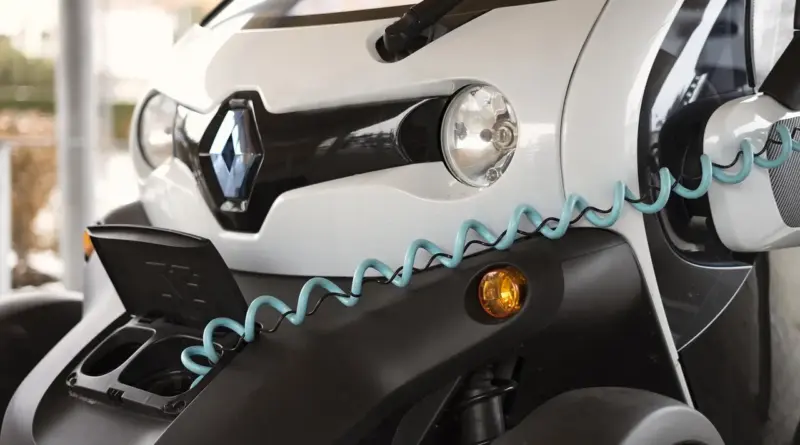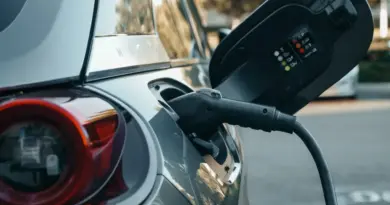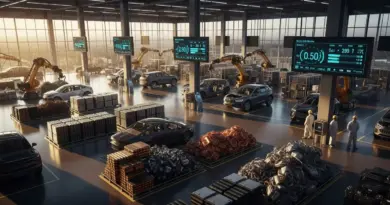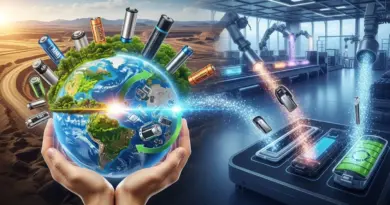Battery Recycling: What Happens to EV Batteries After 10 Years?
Last Updated on September 25, 2025 by Team Eletric Car
Electric vehicle (EV) batteries typically last 10 to 20 years before needing replacement, but they don’t just end up in landfills—most are recycled to recover valuable materials like lithium and cobalt, reducing environmental harm and supporting a circular economy.
This recycling process not only prevents toxic waste from polluting soil and water but also cuts down on the need for new mining, which can save up to 50% of energy compared to producing fresh battery components from raw ores.
The Technology Behind Recycling Electric Car Batteries
Understanding EV Battery Lifespan
EV batteries, primarily lithium-ion types, are designed for durability. On average, they retain about 70-80% of their original capacity after a decade of use, depending on factors like driving habits, charging patterns, and climate conditions. For instance, in moderate climates, a battery might degrade slower than in extreme heat or cold areas.
When an EV battery reaches the end of its useful life in a vehicle—often defined as when it drops below 70% capacity—it doesn’t mean it’s completely useless. Many batteries still hold enough power for secondary applications, extending their lifecycle before full recycling.
Battery manufacturers like Tesla and Nissan offer warranties covering 8-10 years or 100,000-150,000 miles, ensuring performance doesn’t fall too low. This lifespan assurance encourages adoption of electric vehicles, knowing that battery replacement isn’t an immediate concern.
What Happens When EV Batteries Reach End-of-Life?
After about 10 years, EV batteries enter what’s called the end-of-life phase. Instead of disposal, they undergo evaluation for reuse or recycling. First, technicians assess the battery’s health using diagnostic tools to measure remaining capacity and identify any faults.
If the battery is still viable, it might be repurposed for second-life applications. These include energy storage systems for homes, solar farms, or grid stabilization. For example, old Nissan Leaf batteries have been reused in stationary storage units, providing backup power and reducing peak demand on electricity grids.
When reuse isn’t feasible, the battery heads to recycling facilities. Here, specialized companies dismantle the packs safely, neutralizing any electrical charge to prevent hazards. The goal is to extract precious metals and materials, turning waste into resources.
The EV Battery Recycling Process Explained
Battery recycling for EVs involves several precise steps to ensure safety and efficiency. It starts with collection: Used batteries are gathered from dealerships, repair shops, or directly from owners through manufacturer take-back programs.
Once at the facility, batteries are discharged completely to eliminate fire risks. Then, they’re mechanically shredded into small pieces, often in a controlled environment filled with inert gas to avoid combustion.
Next comes separation: Using methods like hydrometallurgy or pyrometallurgy, recyclers extract key components. Hydrometallurgy uses chemical solutions to dissolve and recover metals, while pyrometallurgy involves high-heat smelting. Both aim to reclaim lithium, cobalt, nickel, and graphite.
Recovered materials are purified and sold back to battery manufacturers, closing the loop in the supply chain. This process can recover up to 95% of valuable metals, making it far more sustainable than mining new ones.
Environmental Benefits of Recycling EV Batteries
Recycling EV batteries plays a crucial role in minimizing environmental impact. Without proper handling, batteries could leak harmful chemicals like heavy metals into ecosystems, contaminating water sources and soil.
By recycling, we reduce the demand for virgin materials, which often come from mining operations that cause deforestation, water pollution, and high carbon emissions. For perspective, recycling one ton of lithium can save the equivalent of mining 250 tons of ore.
Moreover, battery recycling supports global efforts to combat climate change. It lowers the carbon footprint of electric vehicles over their lifecycle, making EVs even greener compared to traditional gasoline cars.
Innovations in recycling technology are enhancing these benefits. Companies are developing more efficient processes that use less energy and produce fewer emissions, aligning with sustainability goals.
Challenges in EV Battery Recycling
Despite progress, EV battery recycling faces hurdles. One major issue is the lack of standardized designs across manufacturers, complicating disassembly and increasing costs.
Logistics also pose challenges: Transporting heavy batteries safely requires specialized shipping to comply with regulations on hazardous materials.
Scalability is another concern. As EV adoption grows, the volume of end-of-life batteries will surge, demanding more recycling infrastructure. Currently, only a fraction of global capacity exists to handle projected increases.
Economic factors play a role too. Fluctuating metal prices can affect the profitability of recycling operations, though government incentives are helping to stabilize the industry.
Innovations and Future Trends in Battery Recycling
The future of battery recycling looks promising with emerging technologies. Direct recycling methods, which preserve battery chemistry without full breakdown, could boost efficiency and reduce waste.
Researchers are exploring bioleaching, using microbes to extract metals, offering a low-energy alternative to traditional techniques.
Solid-state batteries, expected in future EVs, might simplify recycling due to their stable structures. Meanwhile, AI and robotics are automating disassembly, making processes safer and faster.
Policy developments are accelerating trends. The European Union’s Battery Regulation mandates recycling targets, while the U.S. invests in domestic facilities through the Inflation Reduction Act to secure supply chains.
Key Players in the EV Battery Recycling Industry
Several companies lead the EV battery recycling space. Redwood Materials, founded by a Tesla co-founder, focuses on closed-loop recycling, partnering with automakers to recover materials directly.
Li-Cycle uses innovative hydrometallurgical processes to achieve high recovery rates with minimal environmental impact, operating facilities in North America and expanding globally.
Umicore, a Belgian firm, specializes in smelting and refining, handling large volumes of batteries from various sources.
These players collaborate with car manufacturers like Ford and GM to ensure seamless integration of recycling into the EV ecosystem.
Economic Impact of Recycling EV Batteries
Battery recycling isn’t just environmental—it’s economically vital. The global market for recycled battery materials is projected to reach billions, creating jobs in collection, processing, and manufacturing.
By recovering cobalt and nickel, recyclers reduce dependency on imports from conflict-prone regions, enhancing supply chain security.
Consumers benefit too: Recycled materials can lower battery production costs, potentially making EVs more affordable over time.
Investments in recycling infrastructure stimulate local economies, with new plants bringing high-tech employment opportunities.
How Consumers Can Contribute to Battery Recycling
As an EV owner, you can play a part in battery recycling. Start by participating in manufacturer recycling programs—many offer free or incentivized returns.
Proper maintenance extends battery life, delaying the need for recycling. Avoid extreme temperatures and use recommended chargers to preserve capacity.
When upgrading, inquire about trade-in options that include responsible disposal. Supporting brands with strong sustainability commitments encourages industry-wide improvements.
Educate others: Sharing knowledge about EV battery lifecycles can dispel myths and promote eco-friendly choices.
Comparing Recycling Methods
| Method | Key Features |
|---|---|
| Hydrometallurgy | Uses aqueous solutions for metal extraction; high purity, lower energy use. |
| Pyrometallurgy | Involves smelting at high temperatures; effective for large scales but energy-intensive. |
| Direct Recycling | Preserves cathode materials intact; emerging tech with potential for 99% recovery. |
This table highlights the main approaches, each suited to different scenarios based on battery type and facility capabilities.
Global Regulations on Battery Recycling
Worldwide, regulations are tightening to ensure proper battery recycling. In the EU, batteries must contain recycled content by 2030, with collection rates reaching 70%.
The U.S. lacks federal mandates but states like California require recycling programs, while federal funding supports research.
China, a major EV producer, enforces producer responsibility, making manufacturers accountable for end-of-life management.
These rules aim to standardize practices, preventing illegal dumping and promoting ethical sourcing.
Myths and Facts About EV Battery Recycling
Myth: All EV batteries end up in landfills. Fact: Over 90% of materials are recyclable, and programs divert them from waste.
Myth: Recycling is too expensive. Fact: As technology advances, costs drop, often offset by material value.
Myth: Batteries explode during recycling. Fact: Safety protocols like discharging prevent risks.
Dispelling these myths helps build trust in electric vehicle technology.
The Role of Second-Life Batteries
Before full recycling, many EV batteries enjoy a second life. In energy storage, they power microgrids or backup systems, lasting another 5-10 years.
Utilities use them for peak shaving, storing renewable energy from wind or solar for later use.
This phase maximizes value, reducing overall environmental footprint by delaying material extraction needs.
Case Studies: Successful Battery Recycling Projects
Tesla’s Nevada Gigafactory incorporates recycling, processing scrap and used batteries on-site to feed production lines.
Volkswagen’s pilot plant in Germany recycles up to 3,600 batteries annually, recovering black mass for new cells.
These examples demonstrate scalable solutions, inspiring broader adoption.
Preparing for the Battery Recycling Boom
With EV sales skyrocketing, recycling capacity must expand. Projections estimate millions of tons of batteries by 2030, necessitating new facilities.
Collaboration between governments, industry, and academia will drive innovations, ensuring sustainable growth.
Investors see opportunity: Funding startups in green tech accelerates progress toward a circular economy.
A Sustainable Path Forward
Battery recycling transforms what could be waste into valuable resources, ensuring EV batteries after 10 years contribute positively. By embracing reuse and advanced processes, we pave the way for cleaner transportation.
As technology evolves, the cycle becomes more efficient, benefiting the planet and economy alike.
Frequently Asked Questions
What happens to EV batteries after they can’t be used in cars anymore?
After 10 years, EV batteries are often repurposed for energy storage before being recycled to recover materials like lithium and cobalt.
Is recycling EV batteries environmentally friendly?
Yes, battery recycling reduces mining needs, cuts emissions, and prevents pollution, making it a key part of sustainable EV adoption.
How much of an EV battery can be recycled?
Up to 95% of materials in EV batteries can be recovered through modern recycling processes, including metals and plastics.
Are there incentives for recycling EV batteries?
Many manufacturers offer take-back programs, and governments provide subsidies or tax credits to encourage proper battery recycling.
What are second-life applications for EV batteries?
Second-life batteries are used in home energy storage, solar systems, or grid support, extending their utility beyond vehicles.
How does battery recycling affect EV costs?
By reusing materials, recycling lowers production expenses, potentially making future electric vehicles more affordable for consumers.
What challenges does the battery recycling industry face?
Key issues include standardization, logistics, and scaling up facilities to handle growing volumes of end-of-life EV batteries.
Can individuals recycle their EV batteries?
Yes, contact your EV manufacturer or local recycling centers; many provide free services for safe disposal and material recovery.




